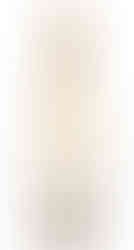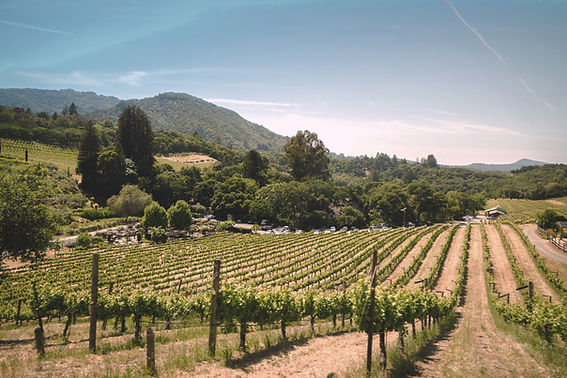Can Damp January Pave a Path to Mindful Consumption?
- Victoria Daskal

- Jan 11, 2024
- 4 min read
Updated: Jan 12, 2024
With my Top Non-Alcoholic Drinks Recommendations

As the new year begins, many of us embrace resolutions such as hitting the gym, cutting down on alcohol, and adopting healthier eating habits. Some dare devils even opt for extreme challenges like "Dry January" or "Veganuary," abstaining from alcohol and meat entirely for a month. While these ambitions offer a health reset and test of willpower, their long-term impact is questionable if individuals revert to old habits come February. Perhaps there’s a better way. A gentler approach to reduce or modify our habits and be more considerate of what we consume year round.
Drink Less, Drink Better

A more long-term approach might be the old adage: "drink less, drink better." Instead of consuming multiple £10 bottles of wine each week, consider investing in just one £30 bottle, reducing the quantity consumed while improving the drinking experience. Or how about a challenge of just two bottles in one month, but make them memorable. Tally up what you'd normally spend on wine all month ("be honest!" David Beckham is watching) and then use that budget on just two bottles.
The higher price bracket will open up a world of fine wines from some of the most prestigious vineyards. Purchasing them will be an experience in itself, perhaps inspiring some to sign up for wine tasting courses or read up on these regions. The more we learn the more we appreciate what's in the glass.
This approach resonates with the emerging trend known as "Damp January," or conversely Damp January can pave a way for mindful, higher quality wine consumption.
What is Damp January?
As opposed going completely dry, 'damp' January means individuals aim to reduce consumption, typically by 50%. It provides a middle ground for resetting after a festive (re: can't stop, won't stop) December and encourages a year-round focus on mindful consumption rather than a temporary abstinence.
Often, occasions trigger the desire for wine, such as a delightful meal or a gathering with friends and family. To cater to these moments without alcohol, a variety of low or no-alcohol alternatives are emerging on the market. These include de-alcoholised wines, non-alcoholic beers, botanical drinks, switchels, and fermented teas like kombucha, as well as mixed mocktails.
Here are my current favourite non-alcoholic drinks:
Aperitivo Time

Botivo: A small batch, aperitif inspired drink with bittersweet, herbal and citrus notes. It’s aromatic, fresh, dry, with a lovely bitter component reminiscent of Campari. The website is full of creative ideas to use with or without alcohol- the flavour alone is quite pleasing. It does contain a high proportion of apple cider vinegar, so my advice is to use a small measure initially and then build up. My favourite way to enjoy it is 25ml of Botivo, 175ml of Tonic Water, and a wedge of orange over ice.
Another top discovery from an Amaro tasting I attended at WSET London, is a classic Italian drink called Chinotto. A carbonated soft drink made from myrtle-leaved orange tree, Chinotto dates back to the 1950s. It looks like a cola but has a fabulous bittersweet taste. Also poured over ice, makes for an easy aperitif.
Mother Root Ginger Switchel: is an OG in the non-alcoholic drinks world. Created by Bethan Higson, who had previously worked in wine, but then wanted an adult drink to enjoy while she pregnant. Mother Root is a gorgeous, and fiery drink based on ginger. It’s perfect with sodar water and a fresh sprig of rosemary – eyeball the measures depending on how much of a ginger kick you like- it’s sensational.
Stylish Sparkling Teas
I crave kombucha- year round- but somehow don’t think of this fermented drink as a wine alternative, but rather reach for it for its probiotic nutritional value. Essentially it’s fermented tea that has effervescent mouthfeel. However, now there are numerous new sparkling teas on the market that have been packaged to look like a classy bottle of Champagne. And when you pour them chilled from fridge into an elegant wine glass they sure do deliver a high- class experience.
Fortnum & Mason Sparkling Tea 0.0%: My favourite ones are from Fortnum & Mason Sparkling Tea 0.0%. Both the white sparkling and rosé sparkling teas are superb. You can enjoy them on their own, but I’ve paired them with sushi, chili prawns over pasta, and even a cheese board. Always brilliant. I got the tip from Master Sommelier Stefan Neumann here. They are both Brut, but there is a touch sweetness to balance the fresh, floral and fruity style.
Jing Jasmine Pearls Sparkling Tea: For purists seeking an authentic sparkling tea experience, this Jasmine Green Tea option by Jing is remarkable. Floral, refreshing with a delicate bitter touch, it is sensational served chilled in a wine glass.
De-alcoholised Wine
Alcohol is a key component in wine, along with acidity, aromas and flavours, or tannins and sugar depending on the style. You notice a lack in body, texture, and of course that warming, intoxicating feel of alcohol, when it’s gone. There have been numerous wines produced in the conventional way – from freshly picked grapes, with an alcoholic fermentation- and then have the alcohol removed through spinning cone technology which still preserves the complex vinous aromas. I’ve found that removing alcohol is less noticeable on the mouthfeel when the wine is sparkling. Those carbonated bubbles add a pleasant texture and freshness to the wine.
Sidewood Nearly Naked Sparkling Low Alcohol NV: This 100% Sauvignon Blanc sparkling wine from Adelaide Hills undergoes spinning cone technology, resulting in a fun and exuberant beverage with elderflower and grapefruit notes. With only half a percent of alcohol, it maintains a crisp finish, proving that removing alcohol can be less noticeable in sparkling wines due to the pleasant texture from carbonated bubbles.
In embracing Damp January, these non-alcoholic alternatives provide a satisfying and diverse range of choices for those looking to reduce alcohol consumption without sacrificing taste or experience.
Inspired to learn more? Click to read about Regenerative Viticulture.















Comments